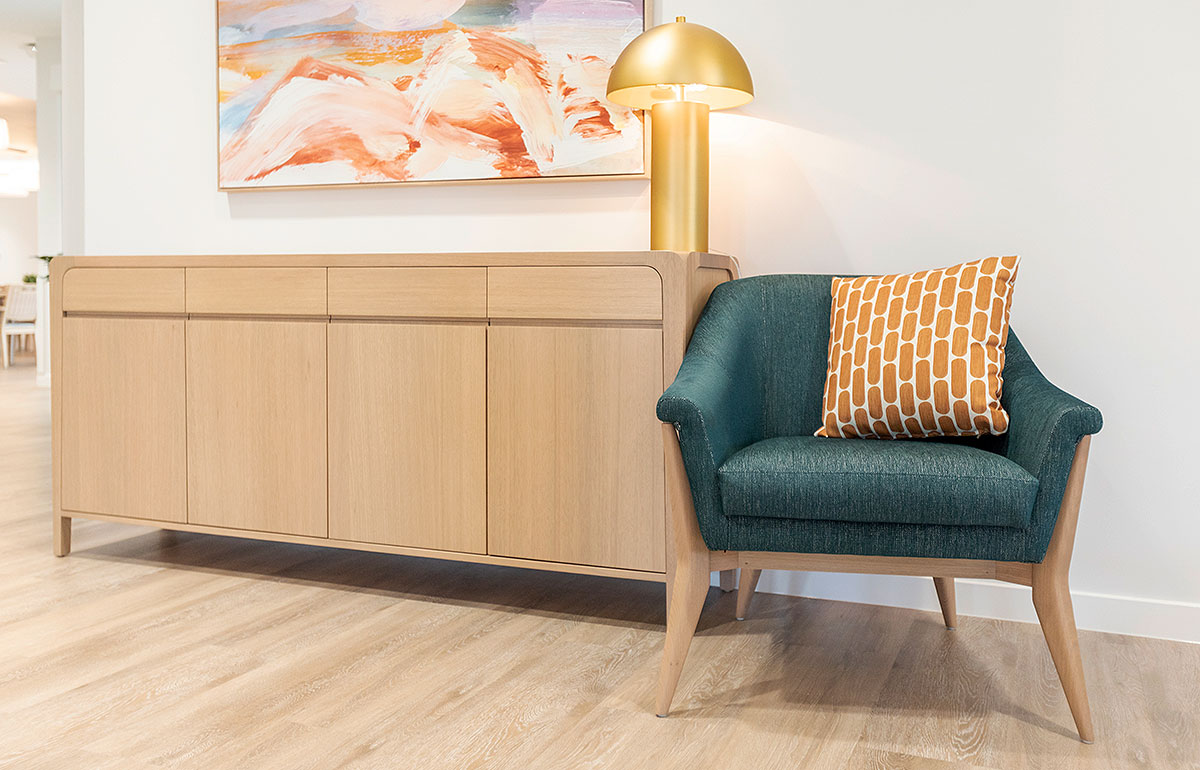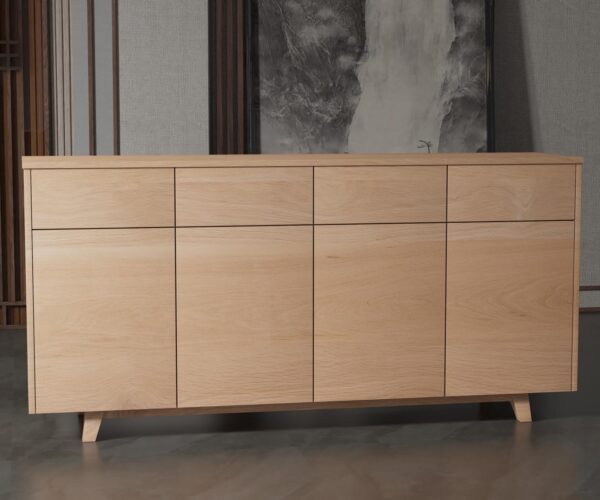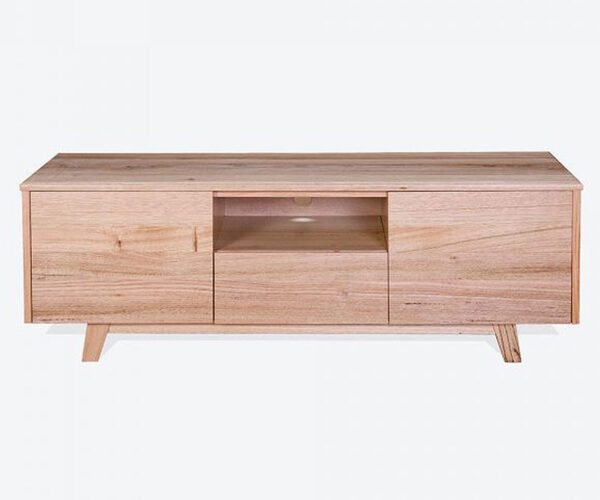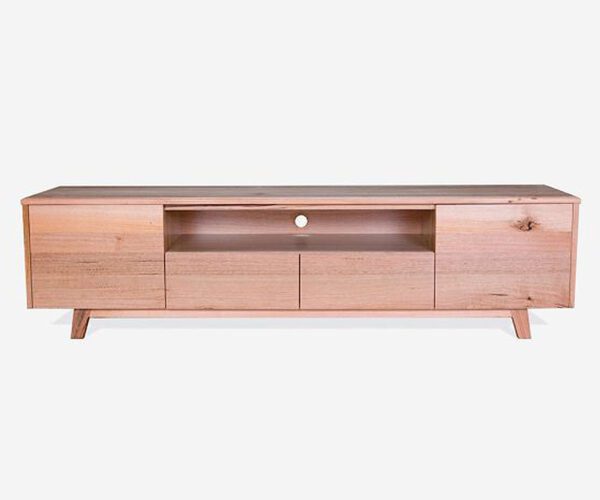From Worn-Out to Well-Funded: How to Get Approval for Your Aged Care Furniture Refurbishment Project

As an aged care facility manager, you know how essential the service environment is to the well-being of residents. Comfortable, functional, and safe furniture is a key part of that environment. But what happens when armchair upholstery fabric is worn or stained, tables wobble, and complaints about broken or uncomfortable furniture start piling up from both residents and staff? It’s clear: a furniture refurbishment project is overdue.
However, securing approval – and funding – for such a project can be a challenge. Management will need a solid case to see the value of the investment. In this guide, we’ll walk you through the steps to build a business case that’s impossible to ignore, turning worn-out spaces into well-funded, rejuvenated environments.
1. Start with a Thorough Needs Assessment
Before making any requests for new furniture, you’ll need concrete evidence to justify the expense. This begins with a comprehensive needs assessment to identify the most critical areas for refurbishment.
- Furniture Condition Audit: Start by assessing every piece of furniture in your facility. Is it damaged? Unsafe? Worn out? Prioritise high-traffic areas like common rooms and dining spaces where furniture is subject to the most wear and tear. Document everything—take photos and note specific safety or comfort concerns.
- Resident and Family Feedback: Complaints from residents and their families are invaluable in supporting your case. Gather these complaints systematically or run a survey to collect broader feedback about furniture-related issues.
- Staff Input: Your staff work closely with residents and often have firsthand experience of the limitations of broken or poorly functioning furniture. Document how these issues impact their work, from making it harder to move residents to creating potential safety hazards.
- Safety and Compliance Risks: Highlight any areas where damaged furniture could lead to compliance breaches, particularly if it poses risks to residents with mobility challenges or dementia.
The needs assessment provides a well-rounded view of the problem, helping you frame your case around both functional and safety concerns.
2. Build Your Business Case
Once you’ve completed the needs assessment, it’s time to build a robust business case. This is where you’ll connect the dots between the issues identified and the broader impacts on your facility.
Key Elements to Include:
- Impact on Resident Satisfaction:
Residents spend most of their time in your facility, and their comfort is paramount. Worn-out or uncomfortable furniture can affect their well-being, mental health, and overall quality of life. Show how investing in new furniture will directly improve their experience, creating a home-like, welcoming environment that promotes comfort and dignity. - Staff Efficiency and Safety:
Poor furniture doesn’t just impact residents—it affects your staff too. Present evidence of how broken or worn-out items make it harder for staff to do their jobs, from caring for residents to maintaining safety standards. The better the furniture, the more efficiently staff can work, reducing strain and injury risks. - Cost of Inaction:
Outline the risks of delaying the refurbishment project. Continuous repairs on old furniture can add up, creating a financial burden over time. Plus, safety risks could lead to accidents, impacting your facility’s compliance and reputation. - Budget and Financial Outlook:
Provide management with a clear budget for the project, including quotes from suppliers. Compare the costs of high-quality, durable furniture versus quick-fix, lower-quality alternatives. Highlight the long-term financial savings of investing in durable furniture that requires less frequent replacement and repair.
3. Make the Case for Compliance
In the aged care industry, maintaining compliance with safety standards is crucial. Broken or unsafe furniture can become a liability, especially if it increases the risk of falls or injuries. This not only puts residents at risk but also affects your facility’s regulatory standing. Demonstrating how the new furniture will keep the facility compliant with industry standards can be a powerful argument in your business case.
4. Provide Concrete Recommendations
Once you’ve highlighted the problems, offer solutions. Provide clear, actionable recommendations on the next steps:
- Prioritise Areas for Replacement: Identify which areas need the most immediate attention based on your needs assessment. Management is more likely to approve projects that solve urgent issues first.
- Furniture Specifications: Be specific about the type of furniture you’re proposing. Highlight durability, comfort, and the ability to meet the unique needs of your residents—such as dementia-friendly designs or ergonomic seating for mobility-impaired residents.
- Consult with Industry Experts: Engage with aged care furniture manufacturers who specialise in aged care solutions to gain insights on the latest trends, materials, and designs that enhance safety and comfort for residents.
- Supplier Quotes and Warranties: Provide multiple quotes from reputable suppliers, showing management the range of costs. Include information about warranties and the expected lifespan of the new furniture to show that this investment will last for years.
5. Present the Long-Term Benefits
To fully convince management, shift the conversation towards the long-term benefits of investing in new furniture:
- Resident Well-Being and Retention: Comfortable and safe furniture will directly impact resident satisfaction. Happier residents can lead to fewer complaints, higher retention rates, and positive word of mouth among prospective families.
- Reduced Repair Costs: Investing in high-quality furniture now will reduce ongoing maintenance and repair costs in the future.
- Enhanced Facility Reputation: A fresh, modern facility will boost your facility’s reputation, making it more appealing to potential residents and their families.
6. Showcase a Timeline and Phasing Plan
Budget constraints may mean that management can’t approve the entire refurbishment project at once. To address this, provide a phased plan for furniture replacement. This allows the facility to replace the most critical items first, spreading out costs over time.
Turning Worn-Out Spaces Into Well-Funded Projects
Getting approval for a furniture refurbishment project doesn’t have to be a daunting task. With a thorough needs assessment, a clear understanding of the budget, and a well-structured business case, you can demonstrate the value of investing in the future comfort and safety of your residents and staff.
Start by showing how new furniture will enhance resident well-being, improve staff efficiency, and ensure your facility remains compliant with safety regulations. By positioning the refurbishment as a long-term investment in the quality of care, you’ll be well on your way to transforming your facility from worn-out to well-funded.
Custom Aged Care Furniture
Custom made with your choice of upholstery and timber polish, ensuring that each piece meets the unique aesthetic preferences of your facility while also enhancing the comfort and well-being of residents.
More News
From Worn-Out to Well-Funded: How to Get Approval for Your Aged Care Furniture Refurbishment Project

As an aged care facility manager, you know how essential the service environment is to the well-being of residents. Comfortable, functional, and safe furniture is a key part of that environment. But what happens when armchair upholstery fabric is worn or stained, tables wobble, and complaints about broken or uncomfortable furniture start piling up from both residents and staff? It’s clear: a furniture refurbishment project is overdue.
However, securing approval – and funding – for such a project can be a challenge. Management will need a solid case to see the value of the investment. In this guide, we’ll walk you through the steps to build a business case that’s impossible to ignore, turning worn-out spaces into well-funded, rejuvenated environments.
1. Start with a Thorough Needs Assessment
Before making any requests for new furniture, you’ll need concrete evidence to justify the expense. This begins with a comprehensive needs assessment to identify the most critical areas for refurbishment.
- Furniture Condition Audit: Start by assessing every piece of furniture in your facility. Is it damaged? Unsafe? Worn out? Prioritise high-traffic areas like common rooms and dining spaces where furniture is subject to the most wear and tear. Document everything—take photos and note specific safety or comfort concerns.
- Resident and Family Feedback: Complaints from residents and their families are invaluable in supporting your case. Gather these complaints systematically or run a survey to collect broader feedback about furniture-related issues.
- Staff Input: Your staff work closely with residents and often have firsthand experience of the limitations of broken or poorly functioning furniture. Document how these issues impact their work, from making it harder to move residents to creating potential safety hazards.
- Safety and Compliance Risks: Highlight any areas where damaged furniture could lead to compliance breaches, particularly if it poses risks to residents with mobility challenges or dementia.
The needs assessment provides a well-rounded view of the problem, helping you frame your case around both functional and safety concerns.
2. Build Your Business Case
Once you’ve completed the needs assessment, it’s time to build a robust business case. This is where you’ll connect the dots between the issues identified and the broader impacts on your facility.
Key Elements to Include:
- Impact on Resident Satisfaction:
Residents spend most of their time in your facility, and their comfort is paramount. Worn-out or uncomfortable furniture can affect their well-being, mental health, and overall quality of life. Show how investing in new furniture will directly improve their experience, creating a home-like, welcoming environment that promotes comfort and dignity. - Staff Efficiency and Safety:
Poor furniture doesn’t just impact residents—it affects your staff too. Present evidence of how broken or worn-out items make it harder for staff to do their jobs, from caring for residents to maintaining safety standards. The better the furniture, the more efficiently staff can work, reducing strain and injury risks. - Cost of Inaction:
Outline the risks of delaying the refurbishment project. Continuous repairs on old furniture can add up, creating a financial burden over time. Plus, safety risks could lead to accidents, impacting your facility’s compliance and reputation. - Budget and Financial Outlook:
Provide management with a clear budget for the project, including quotes from suppliers. Compare the costs of high-quality, durable furniture versus quick-fix, lower-quality alternatives. Highlight the long-term financial savings of investing in durable furniture that requires less frequent replacement and repair.
3. Make the Case for Compliance
In the aged care industry, maintaining compliance with safety standards is crucial. Broken or unsafe furniture can become a liability, especially if it increases the risk of falls or injuries. This not only puts residents at risk but also affects your facility’s regulatory standing. Demonstrating how the new furniture will keep the facility compliant with industry standards can be a powerful argument in your business case.
4. Provide Concrete Recommendations
Once you’ve highlighted the problems, offer solutions. Provide clear, actionable recommendations on the next steps:
- Prioritise Areas for Replacement: Identify which areas need the most immediate attention based on your needs assessment. Management is more likely to approve projects that solve urgent issues first.
- Furniture Specifications: Be specific about the type of furniture you’re proposing. Highlight durability, comfort, and the ability to meet the unique needs of your residents—such as dementia-friendly designs or ergonomic seating for mobility-impaired residents.
- Consult with Industry Experts: Engage with aged care furniture manufacturers who specialise in aged care solutions to gain insights on the latest trends, materials, and designs that enhance safety and comfort for residents.
- Supplier Quotes and Warranties: Provide multiple quotes from reputable suppliers, showing management the range of costs. Include information about warranties and the expected lifespan of the new furniture to show that this investment will last for years.
5. Present the Long-Term Benefits
To fully convince management, shift the conversation towards the long-term benefits of investing in new furniture:
- Resident Well-Being and Retention: Comfortable and safe furniture will directly impact resident satisfaction. Happier residents can lead to fewer complaints, higher retention rates, and positive word of mouth among prospective families.
- Reduced Repair Costs: Investing in high-quality furniture now will reduce ongoing maintenance and repair costs in the future.
- Enhanced Facility Reputation: A fresh, modern facility will boost your facility’s reputation, making it more appealing to potential residents and their families.
6. Showcase a Timeline and Phasing Plan
Budget constraints may mean that management can’t approve the entire refurbishment project at once. To address this, provide a phased plan for furniture replacement. This allows the facility to replace the most critical items first, spreading out costs over time.
Turning Worn-Out Spaces Into Well-Funded Projects
Getting approval for a furniture refurbishment project doesn’t have to be a daunting task. With a thorough needs assessment, a clear understanding of the budget, and a well-structured business case, you can demonstrate the value of investing in the future comfort and safety of your residents and staff.
Start by showing how new furniture will enhance resident well-being, improve staff efficiency, and ensure your facility remains compliant with safety regulations. By positioning the refurbishment as a long-term investment in the quality of care, you’ll be well on your way to transforming your facility from worn-out to well-funded.
Custom Aged Care Furniture
Custom made with your choice of upholstery and timber polish, ensuring that each piece meets the unique aesthetic preferences of your facility while also enhancing the comfort and well-being of residents.
Commercial furniture by room
Based in Brisbane, we’re an Australian manufacturer of aged care furniture, retirement living furniture, hospital & healthcare furniture, hotel & accommodation furniture and student accommodation furniture. We also supply a range of commercial office furniture.
Discover the FHG Look Book: Your Source of Inspiration for Quality Australian-Made Commercial Furniture
- Quality Craftsmanship: See why we’ve been a trusted partner for over 25 years.
- Local Excellence: Learn how our Brisbane team ensures the highest standards.
- Inspiration and Ideas: Find innovative furniture solutions for any environment.
Don’t miss the opportunity to transform your commercial space with FHG’s expertly crafted furniture. Download the FHG Look Book today and start your journey towards exceptional design and quality.













